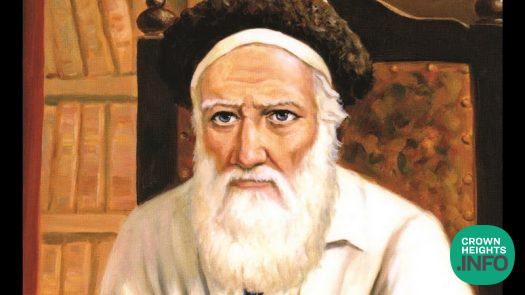
Weekly Story: Moshiach’s Seudah Publicized
by Rabbi Sholom DovBer Avtzon
Your feedback is greatly appreciated. On my yom holedes I wish all the readers and our entire nation that Hashem should fulfill all of each individual and all of our collective requests, in a manner that is seen in revealed good.
To accommodate the increasing number of students, it was necessary to build a large beis hamidrash. The Rebbe chose the lot where the house of his grandfather, the Rebbe the Tzemach Tzedek, used to stand as the site of the new building. In 5666 (1906), the new zal (study hall) was finally completed, and that Pesach, all the students ate in the yeshiva.
On the first night of Pesach, before the Rebbe went to his own seder, he entered the yeshiva and observed the seder of the students. There were a total of 310 students sitting at eighteen long tables, and it was noticeable that the Rebbe derived much pleasure from seeing all the students together in harmony.
On the seventh day of Pesach, his son advised the bochurim who were responsible for taking care of the meals to invite his father, the Rebbe, for the final meal on the last day of Pesach. To their delight, the Rebbe accepted the invitation, and he joined the meal together with the entire staff.
During the meal, the Rebbe publically explained for the first time the significance of the last day of Pesach. He explained that this day’s celebration is in honor of the redemption from this final golus, and that the day’s final meal is called seudas Moshiach. Therefore, just as we drink four cups of wine at the seder to commemorate the redemption from Mitzrayim, so should we drink four cups of wine at the seudah of Moshiach in anticipation of the final redemption.
Rabbi Avtzon is a veteran mechanech and the author of numerous books on the Rebbeim and their chassidim. He can be contacted at avtzonbooks@gmail.com
- The Tzemach Tzedek wrote in his will that no one should live in his house after his passing. Therefore, after the house was destroyed in a fire some time later, no new house was built on that spot. Since the zal was a house of learning and not a personal residence, building it there would not be in contradiction to the Tzemach Tzedek’s will. However, to ensure that no one would try to convert it to
- Hayom Yom, entry for 22 Nissan.
- This is how the account is recorded in Divrei Yemei HaTmimim. In Sefer HaSichos 5701 (p. 105), the Frierdiker Rebbe relates that on the first night of Pesach, when his father went to observe the seder that was set up for the bochurim, he stated that he would join them for the last meal of Yom Tov. However, this is not a contradiction. The Rebbe stated this to his son, who then proceeded to advise the students to invite him.
- During the meal of the previous night, the Rebbe Rashab related that in his youth, he and his siblings were once visiting their grandfather, the Rebbe the Tzemach Tzedek. At that time, he asked his grandfather, “Why is the last day of Pesach a Yom Tov?” His sister, Devorah Leah, replied, “When Jews observe the seven days of Pesach according to halachah, and [Hashem] protects them from inadvertently benefiting from chometz, that is cause for celebration, and the last day of Pesach is a Yom Tov. We rejoice that we have made our way through the entire Yom Tov and haven’t transgressed the terrible sin of benefiting from chometz on Pesach.”
- The Rebbe Rashab said that he was reminded of this incident earlier that day, when he overheard his young granddaughter, [Rebbetzin] Chaya Mushka, saying to her sister that the final day of Pesach is not like the other Yomim Tovim, as we don’t say the brochah of Shehecheyanu. (Sefer HaSichos 5700, pp. 71–72).












